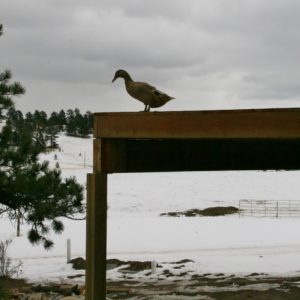Since two of the ducks have suffered a prolapsed oviduct, we’ve done a lot more reading about this issue. One of the causes may have been that the young ducks were forced to commence laying at too young an age by adding artificial light to their daily routine. I will say that I didn’t begin adding the artificial light too soon, according to several references. Most resources recommend somewhere between 19-23 weeks of age, and I began lighting at 21 weeks, just a little more than the natural daylight at that time.
However, after consideration, we have decided not to provide artificial light any longer. We will let the ducks lay naturally, and if we don’t have eggs during late fall & early winter, we’ll survive. I can freeze extra eggs prior to the molt, as I have done before.
I had thought about easing them off of the light gradually, but after Tim had read that the Golden Cascades will typically lay from January-August without the aid of artificial lighting, and with the difficulty of trying to keep Gertrude in the dark AND provide light for the others, I decided to remove the light completely. So, as of February 16, they now have no artificial light.
As of this morning, the ducks have continued to lay. It will be interesting to see if this continues.




















